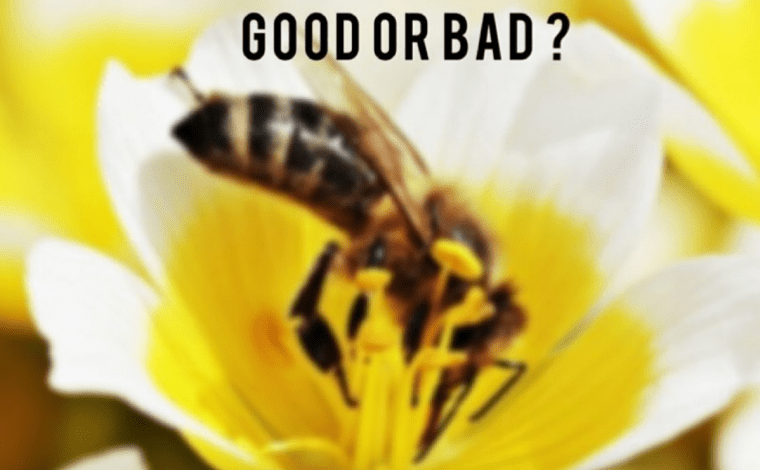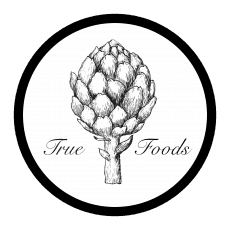
Bee Pollen – the new Superfood? Benefits & Dangers -” a dialectic view “
Bee Pollen – Within the last few month I have seen more and more Bee Pollen appear in recipes all over blog and social media posts. I remember Bee Pollen from my childhood. My mum used to give me a tip of a teaspoon now and then topped with propolis and of course honey. So basically all the goodness you can have on a spoon. It always used to have something magical, because my mum also told me that it is. That I will get the flower – and the bee energy if I eat it. I was never allowed to take them by my own and I remember that my mum used to hide the little glass of bee pollen from me, because I would have definitely eaten the whole glass in one.
The more I was surprised when I saw the big jars of Bee Pollen in the Edeka & Rewe shelves or as a topping in Smoothie Stores. Especially, because me and my best friend had an excursion to a beekeeper who told us that Pollen & Gelee Royal are the most important things for a hive.
Within the next month, I & Moritz are going to make more research, visit a beekeeper, read books and talk to people to get to know more about bees, honey, beekeeping and of course the food trend all around it. This article will be the start for a dialectic discussion all around these topics.
Watch More than Honey for some basic & advanced knowledge about the topic
Basic Information:
“Pollen is the male seed of flowers. It is required for the fertilization of the plant. The tiny particles consist of 50/1,000-millimeter corpuscles, formed at the free end of the stamen in the heart of the blossom. Every variety of flower in the universe puts forth a dusting of pollen. Many orchard fruits and agricultural food crops do, too.
Bee pollen is the food of the young bee and it is approximately 40% protein. It is considered one of nature’s most completely nourishing foods. It contains nearly all nutrients required by humans. About half of its protein is in the form of free amino acids that are ready to be used directly by the body. Such highly assimilable protein can contribute significantly to one’s protein needs (Mercola, 2016)
No wonder that this introduction is more than interesting for anyone who is searching for new superfoods. So lets take a closer look at the benefits of Bee Pollen. We are not going as close in detail as we could just because we aim to give a short & clear overview about the different ways of argumentations. If you are interested in getting more information about the benefits of bee pollen you can visit those websites which we also used as sources for this article : http://www.mercola.com/article/diet/bee_pollen.htm & https://draxe.com/bee-pollen/ & http://www.foodmatters.com/article/10-amazing-health-benefits-of-bee-pollen
- It helps against allergies
- Reduces inflammation
- Acts as an antioxidant
- Protects against liver toxiticy
- Boosts the immune system
- Serves as a Dietary Supplement
- Relieves Menopausal Symptoms
- Helps Relieve Stress
- Promotes Healing
- Energy Enhancer
- Skin Soother
- aid in digestion
- Treats Addictions
- Supports the Cardiovascular System
- Prostate Aid
- aphrodisiac
- may help with weight loss
This is just a brief overview of the claimed beneficial effects of the bee pollen consumption –
The recommended consumption of beepollen is to :
“ use bee pollen is when it’s ground and mixed with foods. Ground pollen can be mixed with honey, cottage cheese or yogurt in a 1:1 to 1:4 ratio — this creates a mixed pollen solution that can be ingested throughout the day. If you’re trying to combat a nutrient deficiency, allergies, inflammation, stress or illness, take one teaspoon of mixed pollen three times a day (draxe, 2016).
Where is the darkside & why is this dialectic?
The main reason of this article is the thought of how is it possible to keep up the supply in a sustainable way if Bee Pollen develop to be a new superfood? In order to gather the different arguments I went through all different kind of online platforms and collected all different kind of facts & arguments to get an overview about the situation:
The fact is :
A working bee has to work 8 hours a day for one month to collect just one teaspoon of bee pollen. One teaspoon dose contains over 2.5 billion grains of flowers.
Gathering pollen is not as easy as it sounds. Once a honeybee arrives at a flower, she settles herself in and nimbly scrapes off the powdery loose pollen from the stamen with her jaws and front legs, moistening it with a dab of the honey she brought with her from the hive. The enlarged and broadened tarsal segments of her legs have a thick trimming of bristles, called pollen combs. The bee uses these combs to brush the gold powder from her coat and legs in mid-flight. With a skillful pressing movement of her auricle, which is used as a hammer, she pushes the gathered gold into her baskets. Her pollen baskets, surrounded by a fringe of long hairs, are simply concave areas located on the outside of her tibias. When the bee’s baskets are fully loaded, the microscopic golden dust has been tamped down into a single golden grain, or granule (mercola, 2016)
How to harvest in a sustainable way:
“As a rule of thumb the foraging area around a beehive extends for two miles (3 km), although bees have been observed foraging twice and three times this distance from the hive. Foraging at extreme distances wears out the wings of individual bees, reduces the life expectancy of foraging bees and therefore the efficiency of the colony
The effective and safe way in which pollen is humanely collected is by means of a device that is put just inside the entrance of the hive. The device will collect little bits of pollen from the bees as they walk across it. In this way, the bees also have pure bee pollen for themselves and will not be traumatized or physically harmed. This will be a sustainable method that has been used for collecting the pollen and ensuring that enough is left over for the bees “(SHOKUIKU, 2016)

The Sundance II pollen trap with rear drawer partially open. © Rusty Burlew.
A worried Beekeeper left a comment in a forum which imensly caught my attention:
To harvest the pollen, commercial beekeepers use a thick “comb” in the bottom of the hive, in the slit the bees use as a entrance/exit. The bees then have to drag themselves across the “comb” to enter or exit the hive. The bristles catch and often tear off their limbs and other parts, and, consequently, pull most of the pollen they’ve collected off their legs in the process. The beekeepers then collect the pollen and and get rid of most of the “debris” (aka. bee body parts) (sunshinerose/ the rawtarian, 2016).
Another resonance was
When I harvest 10 lbs of pollen every two days DURING abundance I know this isn’t affecting their health as upon hive inspection the hives have an abundance of pollen stored. Harvesting pollen actually helps them from “pollen bounding” themselves during heavy pollen flow. (matthewr, 2016)
This is the moment when we are going to open the discussion & give the opportunity to give respondance research, own experience and maybe even insert own research from the beehives we are going to visit.
The question is:
Is it possible to harvest bee pollen in a sustainable way? & if is it possible to remain the sustainability if bee pollen becomes a trend?
Let us know your opinion :
Sources:
Dr. Joseph Mercola,2016 retrieved from : http://www.mercola.com/article/diet/bee_pollen.htm accessed on: 12.07.2017
SHOKUIKU, 2016 retrieved from: http://shokuikuaustralia.blogspot.de/2013/10/bee-pollen-vegan-non-vegan-or-ethically.html accesssed on: 12.07.2017
https://www.therawtarian.com/community/f/discussion/6149/please-boycott-bee-pollen
http://www.beepollenhub.com/pure-bee-pollen/









Sugar is sugar – we consume too much sugar as it is. By the way – the protein content is not what attracts bees nor what nourishes bees – it’s the sugar content.
This is the perfect blog for anybody who hopes to understand this topic.
You realize so much its almost hard to argue with you (not that I actually
will need to?HaHa). You certainly put a brand new spin on a subject that’s been written about
for a long time. Wonderful stuff, just wonderful! http://www.creatorofchange.com/user-profile/tabid/90/userId/609787/Default.aspx
This is the perfect blog for anybody who hopes to understand this topic.
You realize so much its almost hard to argue with you (not that I actually will need
to?HaHa). You certainly put a brand new spin on a subject that’s been written about for a
long time. Wonderful stuff, just wonderful! http://www.creatorofchange.com/user-profile/tabid/90/userId/609787/Default.aspx
This was a good read, thank you. I am a big fan of bee products to help with fatigue and general energy levels.